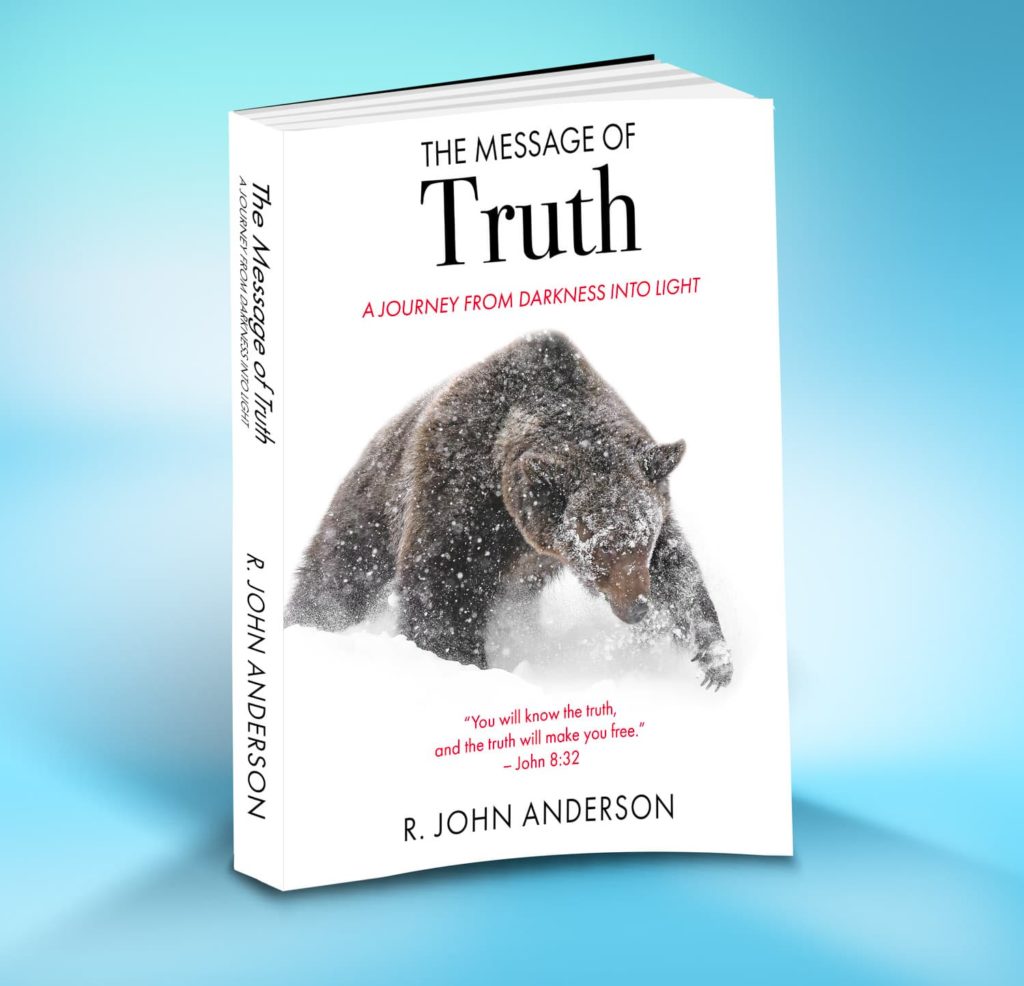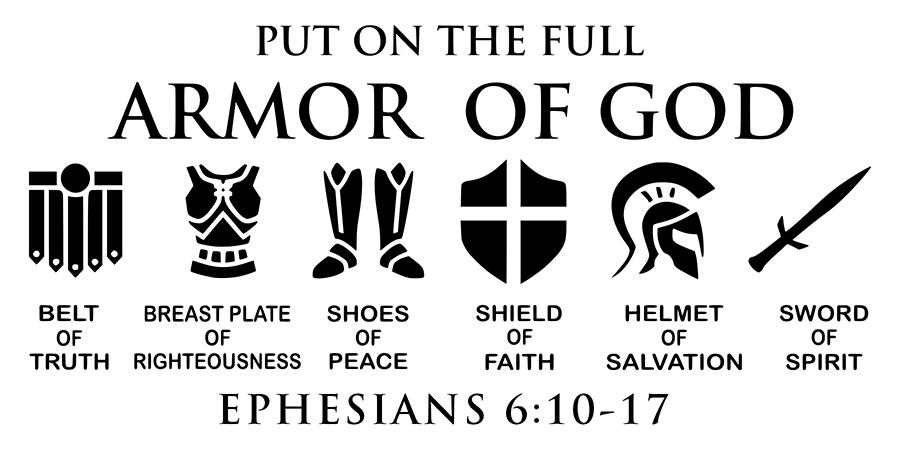All Scripture is inspired by God and profitable for teaching, for reproof, for correction, for training in righteousness; so that the man of God may be adequate, equipped for every good work. – 2 Timothy 3:16-17
It is through His Word, the Holy Bible (i.e., Scripture), that God has revealed Himself to us (as well as through His Son Jesus Christ). We are therefore called to read and study Scripture daily as a child of God:
All Scripture is inspired by God and profitable for teaching, for reproof, for correction, for training in righteousness; so that the man of God may be adequate, equipped for every good work. – 2 Timothy 3:16-17
But He [Jesus] answered and said, “It is written, ‘Man shall not live on bread alone, but on every word that proceeds out of the mouth of God.’” – Matthew 4:4
The brethren immediately sent Paul and Silas away by night to Berea [the Bereans], and when they arrived, they went into the synagogue of the Jews. Now these were more noble-minded than those in Thessalonica, for they received the word with great eagerness, examining the Scriptures daily to see whether these things were so. – Acts 17:10-11
Those are powerful verses, and Matthew 4:4, in particular, is a staggering statement: when you are born again, your new spirit actually feeds on the Word of God! Amazing! Because of this, reading the Bible is among the most important things you can do, perhaps the most important thing (along with prayer). Just as your fleshly body needs food to live, your new spirit needs to be fed the Word of God. If you do not read, study, and meditate on the Word, you will drift away from Christ and back towards this world and sin – towards spiritual death again. Make no mistake, this risk is very real, for it happened to me. As I’ve explained in this book, you can “fall away” even after being born again. In my own experience, I’ve found that skipping just a few days of Bible reading can lead to a feeling of separation from God – almost like He is hiding from you. But of course, it is not God who is hiding; it is your new spirit starving for His Word.
So, to begin, you must get a Bible to read and study. There are many different kinds of Bibles, along with a myriad of translations available. It’s like navigating a maze. This chapter, therefore, outlines some things to consider when choosing a Bible. I once again focus on what has worked best for me.
ORIGIN OF THE BIBLE (AND THE CANON OF SCRIPTURE)
First, a little background – what exactly is the Bible, and where did it come from? The completed canon of Scripture (the set of 66 books we now have in the Bible) was written by human authors over a period of several thousand years; these human writers were inspired by God (via the Holy Spirit, the Third Person of the Trinity). A common question is: Who determined which books to include in the Bible. Wayne Jackson writes: [1]
The Canon of Sacred Scripture
Bible scholars refer to the “canon” of the Scriptures. What is meant by that expression? The term “canon” is an anglicized form of the Greek kanon. Originally, the word had to do with a straight rod or rule, to which a builder would compare his work for trueness.
Gradually, the term came to be employed figuratively of a “norm or standard.” In his letter to the Galatians, Paul referred to the “rule” (kanon) by which Christians are expected to live (6:16). Eventually, the expression came to signify that which has “passed the test.”
When, therefore, the word is applied to the books of the Bible, it denotes those documents which, over a period of time, have passed the test of critical examination, hence, warrant the designation “sacred scripture.” In his Commentary on Matthew, Origen (c. A.D. 185-254), one of the Greek “church fathers,” alluded to the “canonized Scriptures” (Sec. 28). Today, the “Canon” refers to those 66 books which constitute the common Bible.
But this introduces several questions. Who determined which books were to go into the Bible? Exactly when did that occur? And what are the Apocryphal books?
The Standard of Determination
The question of: “which books belong in the Bible?” was determined gradually and on the basis of evidence. By “gradually” we mean that there was not a definite historical date when a synod or council made a determination — “these are the true biblical books!” Rather, over a period of years, by the application of reasonable tests, the documents truly inspired were separated from those works that are spurious. The evidence leading to this decision is classified as external and internal.
External evidence has to do with the testimony of those who had access to the documents originally. How did they view them, and why?
Internal evidence relates to the nature of the material itself. Does it claim to be from God? Is it internally consistent? Does it harmonize with other documents that are perceived to be inspired? Is it characterized by a lofty tone, i.e., that “essence” which one would expect in a narrative that claims inspiration? Does it bear the marks of factual accuracy?
These sorts of things, as applied by reasonable minds, ultimately separated the genuinely sacred books from those unworthy of that recognition.
Old Testament Books
Jewish tradition traces the collection of the Old Testament books to the time of Ezra (mid-5th century B.C.). It may have been a while later before the entire “canon” was actually recognized. By the time Christ was born, there were two versions of the Old Testament.
The Hebrew canon consisted of the 39 books that currently make up our Old Testament — though in the Palestinian version they numbered only 24 (due to a different arrangement — some books being combined).
The Septuagint version (a Greek translation from the 3rd/2nd centuries B.C.) contained various other documents which were “bound up” with the regular 39 books of the Hebrew Bible (the number of these extra books varying in different editions). While these additional books, called the Apocrypha, reflected some historical matters, they were not perceived as “inspired” by God, and, significantly, were never sanctioned by Christ nor any New Testament writer. Some of them, though, are incorporated into Roman Catholic editions of the Bible. For a review of this, see “The Apocrypha: Inspired of God?” elsewhere on this web site.
One of the most significant evidences for the sacred nature of the Old Testament books is the manner in which they are quoted, or alluded to, in the New Testament, having the sanction of Christ and his sacred penmen.
According to one computation (Horn, p. 173), the New Testament contains 433 direct quotations from the Old Testament. [2] No less than 30 of the 39 books are definitely quoted, with numerous additional allusions.
Moreover, it is not just the fact that the Old Testament is quoted, it is the way in which it is quoted that is significant. The technical phrase, “It is written” (used of an inspired work — cf. Thayer, p. 121) is employed in 73 New Testament passages. [3] In some 21 New Testament passages, the Old Testament documents are referred to as “scripture.”
Quotations from at least 11 of the Old Testament books are attributed to God or the Holy Spirit. For example, Peter, quoting from Psalm 69, says that “it was needful that the scripture should be fulfilled, which the Holy Spirit spake before by the mouth of David” (Acts 1:1 6ff). In some 46 New Testament passages, the names of 10 Old Testament books (or authors) are mentioned.
Again, let us emphasize that no Apocryphal book from the LXX is given endorsement, even though the New Testament writers were familiar with these books.
New Testament Books
The New Testament authors considered their writings to be as authoritative as those of the Old Testament scriptures. For example, Paul quotes from the book of Deuteronomy (25:4), and the Gospel of Luke (10:7) and classifies both of these as “scripture” (1 Tim. 5:18).
Peter places “all” of Paul’s “epistles” in the same category as “the other scriptures” (2 Pet. 3:16). The word “other” translates the Greek loipos which denotes “the rest of any number or class under consideration” (Thayer, p. 382). Too, note how Peter puts the “apostles” in the same category as the “holy prophets” of Old Testament fame (2 Pet. 3:2).
The ancient church was unanimous in its acceptance of most of the New Testament books; for a while there was some dispute over James, 2nd & 3rd John, Jude, Hebrews and Revelation. Too, during this time period (2nd/3rd centuries), other books, which had generated some interest (e.g., the “Epistle of Barnabas,” the “Shepherd of Hermas”) were being eliminated. By the 4th century, it was a settled issue that the currently accepted 27 books of our New Testament, and only these, are canonical.
It was not a matter of any official council “deciding” which books would be acknowledged as “inspired”; it was a matter of critically examining, sorting, sifting, and identifying what had become perfectly obvious.
The writings of the New Testament were so profusely quoted by the ante-nicene “fathers” (AD. 325 and back), that it is said that if the whole New Testament were destroyed, it could be reproduced entirely from their citations — with the exception of about a dozen verses (Hastings, p. 12). [4]
Conclusion
We may have every confidence, therefore, that the sixty-six books which compose our present Bible are the true embodiment of the Word of God.
Let us now learn about the different types of Bibles available and how best to read (and study) them.
BIBLE TYPES
There are many different types of Bibles:
- Compact (easy to carry) Bibles,
- Regular (for lack of a better word) Bibles,
- Study Bibles,
- Life Application Study Bibles,
- Journaling Bibles,
- Specialty Bibles (e.g., women’s, men’s, teen, prophecy, recovery, etc., etc., etc.…)
For your first and main Bible, it is best to get a study bible that has commentary/notes in it to help you understand it. The notes may also help you understand how it can be applied in your life. I’ve found that the Life Application Study Bible has been the best choice for me when starting out as a new baby Christian. While it’s a bit bigger to carry around than some of the others, the study notes with each verse helped me figure out how the verse(s) apply in my life.
The difference between a “Life Application” study bible vs. a regular study bible is that the life application notes help you see how the Bible can be applied in your daily life, while study bibles help you understand Scripture to Scripture references at a deeper level. For me, I needed to know how to apply the Scripture in my own life to start with.
If you want, also get a second compact or regular bible to take with you while traveling, etc.…but for the first year or two, it would be highly profitable to spend your time mainly using your study bible. Don’t be afraid to get it all marked up and worn…bibles like that kind of treatment!
I’m making these suggestions based on adults, with reasonable reading skills, not for kids, teens, those with learning disabilities, etc., …as I don’t have any experience with those areas personally. I should also point out that the further you get into the specialty bibles, the more chance you have of editors and publishers introducing their own theology, doctrines, and false teachings, so be very, very careful.
Bibles are available today in both print and electronic versions that you can take along with you on your phone or tablet. I use both; in fact, I have about ten different translations on my phone and tablet, all easily accessible wherever I go!
BIBLE TRANSLATIONS/VERSIONS
The books of the Bible were originally written in Hebrew, Aramaic, and Greek, typically on animal skin or parchment scrolls. Scribes over the years were meticulous in preserving the Word of God, and the accuracy across all of the earliest known versions of the Bible is stunning. In these original languages, the Bible is inerrant – without error.
But very few of us today can read those original languages; so, instead, we must find a translation that has been done into a modern language that we can read and understand. And as these translations are done by men (or committees), there is the possibility of introducing errors. To perform any translation, choices must be made about how to best render the original words in the new language; and sometimes, there is no exact modern counterpart for the original language words. So, we’ll tackle next the hardest part of picking a Bible: which translation to read.
Below is a list of the English translations that are commonly available today (in alphabetical order):
- 21st Century King James Version (KJ21)
- American Standard Version (ASV 1901)
- Amplified Bible (AMP)
- Bible in Basic English (BBE)
- Bishops’ Bible
- Common English Bible (CEB)
- Complete Jewish Bible (CJB)
- Contemporary English Version (CEV)
- Douay-Rheims Version (DRV)
- Easy-To-Read Version (ERV)
- English Standard Version (ESV)
- Geneva Bible
- God’s Word Translation (GW)
- Good News Bible (GNB) / Today’s English Version (TEV)
- Green’s Literal Translation (LITV)
- Holman Christian Standard Bible (HCSB)
- Jerusalem Bible (JB)
- King James Version (KJV), 1611
- Modern English Version (MEV)
- Modern King James Version (MKJV)
- New American Bible (NAB)
- New American Standard Bible (NASB, 1995 or 1998)
- New Century Version (NCV)
- New English Bible (NEB)
- New English Translation (NET)
- New International Readers Version (NIRV)
- New International Version (NIV)
- New King James Version (NKJV)
- New Living Translation (NLT)
- New Revised Standard Version (NRSV)
- Open Bible
- Revised English Bible (REB)
- Revised Standard Version (RSV)
- The Living Bible (TLB)
- The Message (MSG)
- Today’s English Version (TEV)/ Good News Bible (GNB)
- Today’s New International Version (TNIV)
- Tyndale Bible
- World English Bible (WEB)
- Young’s Literal Translation (YLT)
Wow, that’s quite a list! As you can see, there are many translations to choose from, with new ones seemingly being added every year. There are many heated opinions about why one translation is better than another. Once again, I’m simply going to suggest what has worked best for me. I have therefore bolded the ones which I think are worthy of serious consideration to be your main Bible. My first (and still current) main Bible is the NASB 1995 translation. I have also found the not as widely known LITV and YLT translations to be helpful at times when comparing word choices. Also, be aware that each translation can vary as they update it; for example, the 2020 NASB has made quite a few changes from the 1995 NASB. It’s wise to review what those changes are.
Note that some “KJV Only” zealots claim that the 1611 KJV translation is the only correct English language Bible ever published. This “KJV Only” false teaching is covered in more detail in the Beware the Wolves chapter, but I mention it here again because it is proclaimed in ferocious volume to scare you. The “KJV Only” zealots are even so bold as to claim that if you use any other translation, you will go to hell! This is complete rubbish and utter nonsense. Furthermore, even the KJV translation has well-documented issues where the translators made unfortunate word choices. All translations involve choices by the translators, and the 1611 KJV is no different. While the KJV Bible is certainly a good and regal one (one of the better ones, in fact), it is just one of several that you should be reading and comparing.
It’s a further point of note that the various translations started from different sets of original manuscripts (in Greek, Aramaic, and Hebrew); that is a fascinating topic in itself to learn more about, but it is beyond the scope of this book.
TRANSLATION METHODS
There are also three methods used when making translations:
- Literal (Formal Equivalence) Translations: This type of translation aims to perform a word-for-word translation from the original manuscripts (e.g., the KJV, NKJV, NASB),
- Dynamic Equivalence Translations: This type of translation uses a thought-for-thought method of translating the original manuscripts (e.g., the NIV, TEV/GNB), and
- Paraphrase Translations: This type of translation involves the translator rewriting/rewording in the new language what they think the original manuscript stated (e.g., the NLT, MSG, TLB). Anytime you are dealing with a paraphrase translation, you are not reading the original words – you are instead reading what the interpreters thought the verses were saying! Therefore, this method of translation is wide open to abuse (even unintentionally) and allows the translator/editor/publisher to insert their own opinions and theology. Because of this issue, I do not recommend this type of translation for your main Bible. In fact, be very wary of these types of Bibles.
The majority opinion, and I agree with it, is that literal translations produce the most accurate results. I had already factored this advice in when underlining the prior translations.
MY RECOMMENDATION
So, what is one to make of all this, with so many types of Bibles and different translations to choose from? Here’s my advice, which I follow myself: I recommend that you use one of the literal translations as your main reading/study Bible and that you also compare at least five (5) different translations side-by-side whenever you read and study Scripture.
Comparing multiple translations helps to weed out any particular idiosyncrasies or poor translation/word choices made by any one translation. By comparing multiple translations at the same time, you can also sometimes see the original intent of the verse more clearly. You can also check to see if the divinity of God, the Trinity, or Jesus, or the blood of Christ has been diminished in any of the translations, which is by far the greatest concern.
Wayne Jackson also eloquently notes: [5]
The renowned scholar D. J. Wiseman has observed that no single English translation is adequate to reflect the depth or richness of the text of the Old Testament. [Note: I also extend this comment to the New Testament]
Reading and comparing multiple translations today is made easy with the help of technology and digital Bibles, where multiple translations can be displayed and read side by side quickly and easily. I’ve found that I come away with a much better and fuller understanding of God’s Word when I study in this manner. There are also parallel Bibles that list translations side-by-side. So instead of sticking exclusively to one translation, being fluent and capable of using several reputable ones is far and away the wisest choice.
COMMENTARIES, DICTIONARIES, CONCORDANCE, ETC.
It is very helpful to have additional resources when studying the Bible:
- Commentaries. It is prudent for the student of the Bible today to learn from the wise and learned saints that have gone before us, some of whom gave their lives to seal their testimony. Therefore, having a couple of commentaries from trusted writers goes a long way towards understanding Scripture. In particular, I’ve found the Matthew Henry exposition and the Christian Courier commentaries by Wayne Jackson to be the ones I consult most frequently. Others are also available (e.g., the J.W. McGarvey Commentary on Acts, Adam Clarke’s commentary, etc.).
- Dictionaries: An English language (or whatever language you speak) dictionary and a Bible dictionary (which explains biblical terms) are helpful in understanding unfamiliar words.
- Concordance: A cross-reference index of words and verses.
- Biblical Maps: Helpful in understanding the ancient geography and land of Jesus’ time and the missionary journeys of the apostles.
These resources are often available today in electronic format, making them easy to carry with you at all times and also enabling easy word lookup and cross-referencing. Obviously, one must use caution, discretion, and discernment when reading any resource, for they are the non-inspired words of man.
NOTES AND CAUTIONS
And lastly, when reading any Bible, be wary of any words that have been added by man. While such notes can be helpful at times (e.g., see the notes added to 1 Thessalonians 5:12-22 in the AMP Bible), they are not inspired or inerrant, and they must be examined carefully. These include things such as section/chapter headings, study notes, and words added inline to verses (e.g., AMP Bible). These words only represent the opinions of the men/publishers that have added them. This warning also applies to any pictures or illustrations added, for they also convey the artist’s interpretation and can be very misleading. Even the verse numbers themselves, while helpful, were added by man – the original Hebrew and Greek divinely inspired manuscripts did not have them in there.
This warning strongly applies to any notes or headlines related to Bible prophecy (and eschatology/end-times matters), as those areas are highly corrupted today. Again, I repeat, it is through these added words that the opinions, false teachings, and doctrines of men and publishers can and do sneak into the Bible unawares! See the Beware the Wolves chapter and also the chapter on Being a Berean.
FALSE TEACHING(S) YOU WILL ENCOUNTER:
- The Bible is simply fictional “myths, folklore, and poetry”
- The “KJV Only” Bible movement
RELATED SCRIPTURE:
Your righteousness is an everlasting righteousness,
And Your law is truth. – Psalm 119:142
How blessed is the man who does not walk in the counsel of the wicked,
Nor stand in the path of sinners,
Nor sit in the seat of scoffers!
But his delight is in the law of the Lord,
And in His law he meditates day and night. – Psalm 1:1-2
The sum of Your word is truth,
And every one of Your righteous ordinances is everlasting. – Psalm 119:160
Sanctify them in the truth; Your word is truth. – John 17:17
However, they did not all heed the good news; for Isaiah says, “Lord, who has believed our report?” So faith comes from hearing, and hearing by the word of Christ. – Romans 10:16-17
So Jesus was saying to those Jews who had believed Him, “If you continue in My word, then you are truly disciples of Mine; and you will know the truth, and the truth will make you free.” – John 8:31-32
For whatever was written in earlier times was written for our instruction, so that through perseverance and the encouragement of the Scriptures we might have hope. – Romans 15:4









